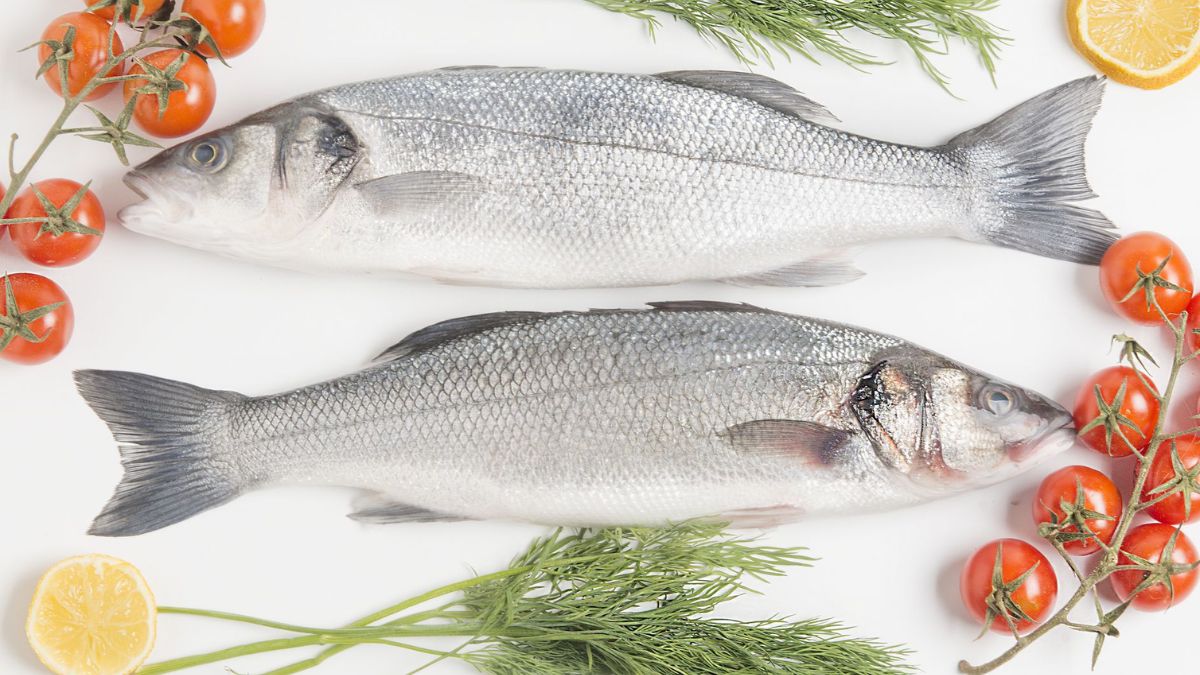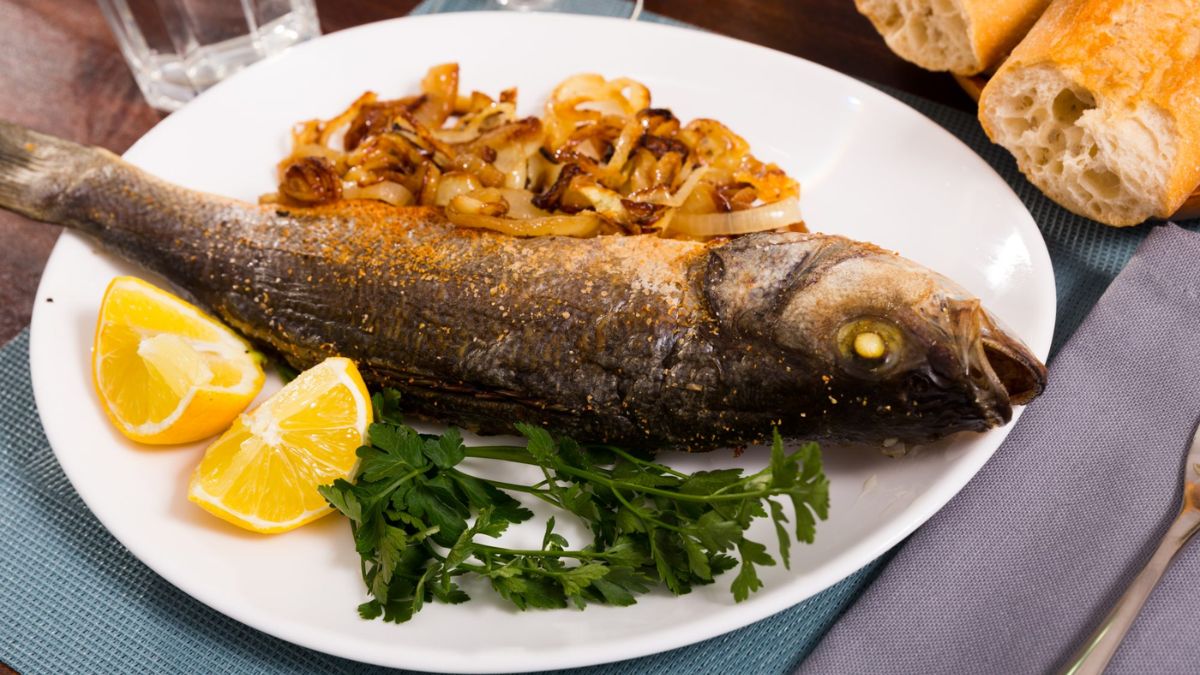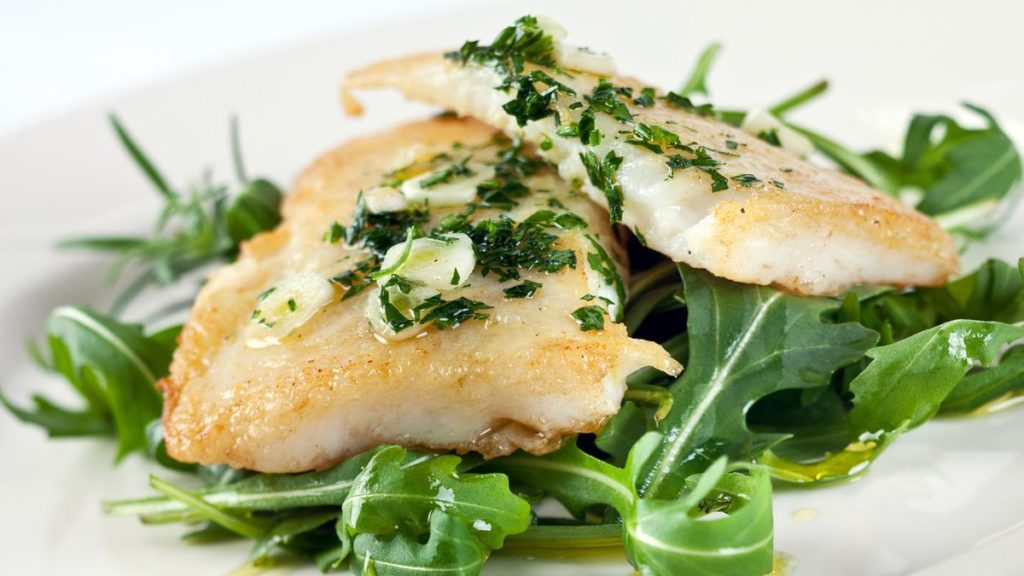Branzino is a mild white fish that is often roasted whole and served with lemon in Italian food. The fish, also called European bass, is showing up on menus worldwide because of chefs and diners like the sweet, flaky meat. It is one of six species in the family Moronidae, and this family also has white perch, yellow bass, white bass, and striped bass. Some fish live in freshwater, while others live in the Atlantic Ocean, and one species moves back and forth between the two types of water. All temperate basses are considered game fish, and they taste and feel the same.
Branzino is a mild white fish called European bass, Mediterranean bass, and loup. Like halibut, it has a sweet, delicate flavor and is often roasted or grilled in Italian, Greek, and Portuguese cooking. There are a lot of options for farmed Branzino. It is a popular fish in the United States and has silver skin. Even though the name isn’t very clear, this fish with silvery skin is also called European sea bass. It is mostly grown near the Mediterranean Sea, where it is more likely to get sick because it has a lot of salt and waste. The kind that comes from farms can be grilled, steamed, or eaten raw.
What is Branzino?
Branzino is a white ocean fish that lives in the Mediterranean Sea. Over the years, though, its number has decreased because too many people have been fishing for them. It is now being raised on farms in its native area to keep from overfishing.
It is called case mouth, sea perch, loup de Mer, and “king of the mullets,” but Branzino or European sea bass is the most common name. Outside of its home in the Mediterranean Sea, it can be found in the Black Sea and the eastern Atlantic Ocean, from Norway to Senegal. Since it is a migratory species, they move to warmer waters in the south during the winter. This fish hunts at night and can get up to 3 pounds big, but most Branzino you’ll see on the plate is closer to 1 or 2 pounds, making it a great dish for two.
Branzino vs. Chilean Sea Bass
Chilean sea bass is a Patagonian toothfish, not a bass. On the other hand, Branzino is a member of the Moronidae family, also known as the “temperate basses” family. Chilean sea bass is meatier and tastes more like butter than Branzino, which is light and sweet and can soak up other flavors. These two don’t taste or feel the same regarding substitutions. One is thick and filling, while the other is lighter and can be eaten by itself.
What does Branzino Taste Like?
It is is light and flaky, like sea bass or halibut, and has a mildly sweet taste. The mildness helps bring out the flavors of whatever you mix it with, whether it’s lemongrass and chilies from Southeast Asia or fennel and tomatoes from a classic Mediterranean dish. Mild, crumbly, and just a little bit sweet. It tastes a lot like halibut and other kinds of sea bass.
Branzino is a fish with a mild taste and sweet, flaky, buttery flesh. People who don’t like the texture or strong fishy taste of oily fish should try Branzino. Branzino goes well with tangy ingredients like lemon, chili, fennel, tomatoes, and lemongrass because it has a mild flavor and a smooth, light texture.
Where to Buy Branzino?
European bass is another name for Branzino. It is grown all over the world, including in New England. You can also buy Branzino caught in the wild, though it’s getting harder to find because of overfishing. Whole Branzino is sold in many local fish shops, and you might also find it in larger grocery stores that sell fresh fish. Depending on where you live, you might be able to find it at the grocery store or fish shop near you. It is grown worldwide, like in New England (particularly Connecticut).
Most seafood restaurants will have Branzino on the menu. If you want to cook it yourself, look for a fish shop, fish market, or large grocery store with a fishmonger. You can also order Branzino online. You can get farmed Branzino for about $10 per pound, which is a good price. If you’re paying a lot more for Branzino, it’s likely wild Branzino caught with a line and brought from Europe. Branzino is called European sea bass, but don’t mix it up with Chilean sea bass, a different fish, or American black bass.
Storing Branzino
To keep fish as fresh as possible, it should be kept in the fridge for up to two days or frozen tightly wrapped in plastic. Bring the fish out a few hours before you want to cook it, or let it thaw overnight in the fridge. Fish is hard to keep fresh because home refrigerators aren’t always cold enough. But your Branzino should be fine if you don’t keep fresh or cooked fish in the fridge for more than a day.
Is Branzino a Healthy Choice?
Fish is an important part of a healthy diet because it provides important nutrients, especially for children. According to official dietary guidelines, we should eat at least 8 ounces of fish twice or thrice a week to keep our hearts, bones, and stomachs healthy. Branzino is a fish that is very good for your health. It has vitamins A and B, fat-soluble vitamins A and E, protein, amino acids, iodine, magnesium, phosphorus, potassium, zinc, calcium, and the very important iodine. A serving of Branzino will give you more than half of the daily recommended amount of vitamin D and a third of the selenium you need.
Branzino is a low-calorie choice because it is a lean fish. A pound of Branzino has only 300 calories and no unhealthy saturated fats. Even though Branzino is not an oily fish, you will still get a good amount of omega-3 fatty acids, which are good for your heart and help fight stroke, obesity, and high blood pressure. Branzino to your diet boosts your immune system, fights cancer, and helps your bones grow.
If you are worried about how much mercury and other toxins are in Branzino, you can rest easy. The US-FDA says that European sea bass is the “best choice” because it has low levels of these toxins and is safe for babies and young children to eat.
Which Cooking Methods are Best for Branzino?
Since Branzino is on the smaller side and doesn’t have big bones, it’s a great fish to grill, steam, or bake whole. Stuff the cavity with lemons and fresh herbs, bake at 325F for about 25 minutes, then let it rest for 5 minutes before serving on a platter with citrus slices and more fresh herbs.
If you are steaming the fish, use a lot of freshly squeezed lemon juice, herbs, or a dry rub to season it. Fish that have already been cooked can also be flaked into a dish before being served. Branzino is a great fish for casseroles, stews, pasta, and other one-pot meals because it flakes into small pieces.
The most popular branzino preparation methods include grilling, sautéeing, steaming, and roasting.
Roasting and Grilling
Most branzino recipes call for roasting or grilling the whole fish. Branzino is a small fish (a two-pound fish is perfect for two people) with simple bones that are easy to remove, making roasting a whole fish the best way to cook it. So, Branzino is a good fish to start with if you’ve never cooked a whole fish before.
When you roast a whole fish with the bones still in it, the fish has a lot more flavor, the skin chars and crisps up beautifully, and the meat stays moist. If you’re nervous about cooking a whole fish, have your fishmonger scale and gut it for you. If you want, they will remove the fish’s head or cut it in half so it can be grilled more easily.
Salt and pepper the fish, stuff it with lemon and herbs and bake or roast it. This way of cooking Branzino is typical of Italian and Greek cooking styles. Even though you can grill it on a grill or in the oven, the best way to keep it moist and tender is to roast it in a paper wrapper called “al cartoccio” in Italian. At 3250F, it will take about 25 minutes to roast a whole stuffed branzino. Let fish rest before you serve it. Fish that has been filleted or flattened only needs four to seven minutes per side on the grill or barbecue.
Garnish grilled Branzino with a twist of lemon and fresh herbs.
Steaming
Branzino is also delicious when steamed, and the meat is soft and flaky. Use lemon juice, herbs, a dry rub, or Asian spices like lemongrass, lime leaves, and chili to season the fish.
Either serve the fish whole, or flake the cooked fish into a pasta, pie, or casserole.
Sauteeing
Pan-frying and sautéing branzino fillets are great ways to cook them without drying them out. Use olive oil (or a mixture of butter and olive oil) to flavor the fish and make the skin crisp. When the fish is done, drizzle it with lemon juice or finish it off with soy, oyster, or teriyaki sauce.
Which Flavors Go with Branzino?
As a fish from the Mediterranean, you can get ideas for flavors from this area. But Branzino’s mild taste makes it a great fish for cooking Asian-style.
Best Herbs
Parsley, oregano, fennel, rosemary, dill, thyme, cilantro, and lemongrass all go well with Branzino.
Best Vegetables
Branzino tastes best when cooked with bright tomatoes, roast peppers, and strong olives. Celery is great for adding crunch; garlic, green, and sweet onions go well with all kinds of fish. Since Branzino isn’t too strong, you can add chili or capers, especially when marinating it.
Best Marinades and Dressings
It tastes great grilled with a little olive oil and a squeeze of lemon or lime juice. Poaching or dribbling it in white wine is also a good idea.
Best Sides for Branzino
Serve this with something simple, like couscous, rice, potato salad, roasted potatoes, or crusty bread. Like roasted carrots and broccoli, a fresh salad always goes well with fish.
All About Branzino
It is a white saltwater fish with no oil on its skin. Depending on where you are in the Mediterranean, it is also called the European sea bass, Mediterranean sea bass, lavraki, white salmon, Spingola, or lubina. This is a fish that hunts at night and is also called case mouth, sea perch, and king of the mullets.
The average Branzino will be about 32 inches long and weigh between one and three pounds. Branzino comes from the coasts of Europe’s west and south, as well as the coast of North Africa. You can also catch it from Norway to Senegal in the Black Sea and the eastern Atlantic Ocean.
Even though it was a common fish in the Mediterranean Sea for thousands of years—ancient Romans ate it. Overfishing has nearly wiped out the wild fish population. Anglers still like to catch this prized fish for fun, but Branzino is rarely caught in the wild for commercial purposes. Most of the Branzino you buy today comes from farms.
Since the early 2000s, this fish farms have become common in the Mediterranean, especially in Italy, Spain, Croatia, and Turkey. Branzino was also raised in Norway, Canada, and Connecticut, on the east coast of the United States. It does well in the recirculating tanks at fish farms. It can live in saltwater, brackish, and even freshwater like tilapia.
Conclusion
Branzino is a mild white fish that lives in the waters of northern Africa and the southern part of the Black Sea. It has a mild taste and works well when baked or fried. It doesn’t cost much and goes well with pasta, rice, and seafood, among other things. This fish is good for cooking and eating because it can be used in many different ways.
Most people make it at home, which is the most common way to cook it. At a nearby seafood market, it’s easy to find fresh whole fish. It is often made at home, and you can eat it whole or cut it into pieces. To cook Branzino, you don’t need to use exact measurements. Since there is no need to make exact measurements, the process is quick and easy. There are different kinds of Branzino, and each tastes and feels different.


